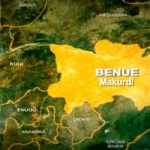AfCFTA, is a Viable Solution for Africans to Reap Non-Economic Benefits- VP, AfDB
Khaled Sherif, AfDB VP for Regional Integration and Business Delivery
In this interview ahead of the African Economic Conference, the African Development Bank’s Vice-President for Regional Integration and Business Delivery, Khaled Sherif disagrees with the assertion that Africa’s regional integration is not a reality. In his view, the Bank Group’s investments have contributed to integrating Africa. AfCFTA, an initiative towards integrating the whole continent, is a viable solution for Africans to reap non-economic benefits such as peace and security as well as free trade – Excerpt.
In light of regional integration in Africa, what are your expectations for this year’s African Economic Conference?
The launch of the African Continental Free Trade Area in March this year marked a significant event on the continent’s regional integration agenda. In line with the Bank’s Regional Integration Strategic Framework, pillar two on trade and investment, our contribution would be ensuring that the dream of establishing an African Economic Community by the founders of the African Union is soon realized. This will be achieved through working together with Regional Economic Communities (RECs) and the African Union Commission in raising Africa’s competitiveness and deepening intra-African trade. I expect that together with our partners, the United Nations Development Programme and the United Nations Economic Commission for Africa, we will come up with a clear roadmap that will articulate our plan of action for the next year in support of regional integration in Africa.
Regional integration requires cooperation among countries in trade, investment and domestic regulations as well as transport, ICT and energy infrastructure. In spite of the Bank’s efforts to provide financial and policy assistance to Regional Member Countries (RMCs), regional integration is not yet a reality. How would this year’s AEC help to change the status quo?
I wouldn’t agree with the assertion that regional integration is not a reality. If you are to go back to the Abuja Treaty, it recognizes RECs as the building blocks for the African Economic Community. There is a lot of work on regional integration going on at the RECs level. The Tripartite Free Trade Area agreement signed in June 2015 is one of the largest FTAs in the world and we believe it forms the nucleus for the establishment of the African Economic Community. The TFTA Agreement has been signed by 22 of the 29 countries making up the tripartite region. Recently South Africa ratified the Agreement and it is anticipated that by April 2019, most countries would have followed-suit, paving way towards implementation of the Agreement. The AfCFTA is one initiative towards integrating the whole continent. It complements other initiatives such as the Boosting Intra African Trade (BIAT), which has seven pillars addressing all the other areas that should enhance integration, the Programme for Infrastructure Development in Africa (PIDA), among others. The BIAT initiative addresses bottlenecks in industrial development, trade finance, and non-tariff barriers, among others.
To what extent can we assert that the Bank’s projects and knowledge products have helped to improve regional integration on the continent? What should the Bank Group do differently to enable Africans reap non-economic benefits such as peace and security from its interventions?
Sixteen out of the 54 African countries are land-locked which makes connectivity to markets difficult. The Bank has been a pioneer in the provision of physical trade infrastructure such as roads, rail, ports, energy and ICT infrastructure. This has helped improve trade and investment in many of our Regional Member Countries (RMCs). The experience gathered over the years has enabled the Bank to incorporate non-economic benefits for RMCs. Recently the Board of Directors of the Bank approved the Country Resilience and Fragility Assessment (CRFA) tool, which was designed to bring new quantitative rigor to measuring both capacities and pressures within (RMCs). This tool will enable the Bank to discuss such issues related to resilience and fragility with RMCs to enhance peace and security. The Bank is also in the process of developing a Trade and Transport Facilitation Toolkit, which will ensure that soft infrastructure issues are incorporated from the design stage of every infrastructure project.
Developing strong trade relationships among neighbouring countries will help reduce poverty and spur Africa’s development. However, many African countries have trade regimes that impede intra-African trade. What solutions would you propose to spur free trade among countries of the region?
Trade regimes in most African countries are facilitative of trade. What impedes intra-African trade are non-tariff barriers, some of which come in the form of non-tariff measures such as Sanitary and phytosanitary measures, Technical Barriers to Trade. Most of the protocols governing trade in RECs have provisions that address non-tariff barriers. The Bank has supported the online non-tariff barriers reporting mechanism covering the tripartite region and a few countries in the Economic Community of West African States. The mechanism has helped in resolving more than 90 percent of reported non-tariff barriers.
(Courtesy AfDB)









